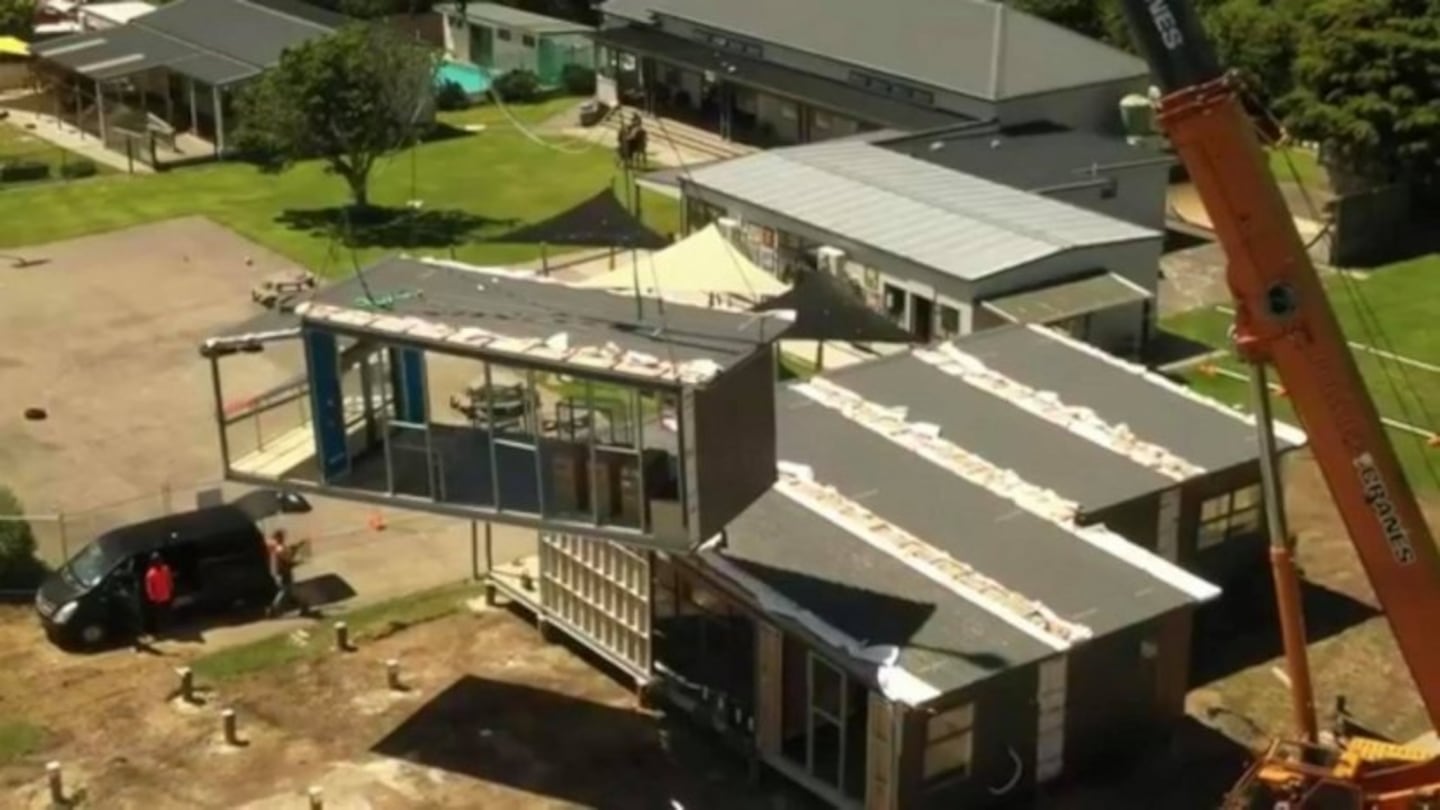Nine new classrooms have been delivered to Whāngārā School on the East Coast, a result of government funding. Whāngārā School is a mainstream school, but due to a high demand for the Māori immersion unit within the community, the government has supported its growth.
Wairere Kutia is a student in the Māori immersion unit, and is excited about the prospect of new learning spaces, “It's amazing, we're really lucky, it's really good too because now our Māori immersion class might expand, and there might be more students who can come and learn Māori, that would be awesome, and we'll have more room to learn new things as well.”
Another student, Jackson Maxwell, says, “We're extremely fortunate because our Māori immersion unit, Te Puna a Tinirau, is very small and now we have a new space for learning.”
There are 80 students on the roll, but they've outgrown the learning spaces available to them.
Principal Lisa Maniapoto says, “It's a dream of ours, of Ngāti Konohi, because the school is growing, because of the kaupapa, and the subjects pertaining to the environment. Now we will be free to open the doors to the community, to families, to come to the school. Before, the classrooms were tiny, and children were learning in confined spaces, and in the kitchen as well. The school was very full.”
Based on Paikea
The prefab modules were constructed in Wellington, and delivered today. They will extend the capacity of the school and allow more children to learn in a more comfortable environment.
Teacher Jay Love plays a lead role in ensuring the students stay connected to Te Ao Māori, “The main objective of the lessons here at Whāngārā is for these students to know who they are, to know their ancestors well, and the nature of the times in which they lived, to bring those aspects forward to today, so that they may stand strong for the days to come, so they know their unique Whāngārā identity in this new world.”
Established in 1902 as Whāngārā Native School, the education centre has a rich history and has stood the test of time.
“The theme of this school is based on our ancestor Paikea, and the subjects of the environment but the main goal of the community here is to strengthen the capacity for Māori language among the children,” Lisa Maniapoto says.
Approximately 80% of the students are Māori and the Māori immersion unit, Te Puna a Tinirau, continues to grow from strength to strength.
But like many schools with strong kaupapa Māori themes, the school curriculum goes much further beyond the walls of the classroom.
“We take the students to the sea, to learn to surf the waves, to paddle in outrigger canoes, to ride horses, to connect them to the land, so that they feel those experiences, and learn those skills, and they know they're from here, and these are the characteristics of this place, and Te Reo goes hand in hand with those lessons,” Jay Love says.
Even at a young age, students demonstrate the maturity of a holistic perspective beyond their years, acknowledging that the collective is the priority.
"The benefit is not only for me but for the entire school. Maybe, when I'm older, the classrooms will still be here and I'll be able to bring my children to learn Te Reo. It's great," Wairere Kutia says.
The students will be able to enter their new learning spaces next week.

